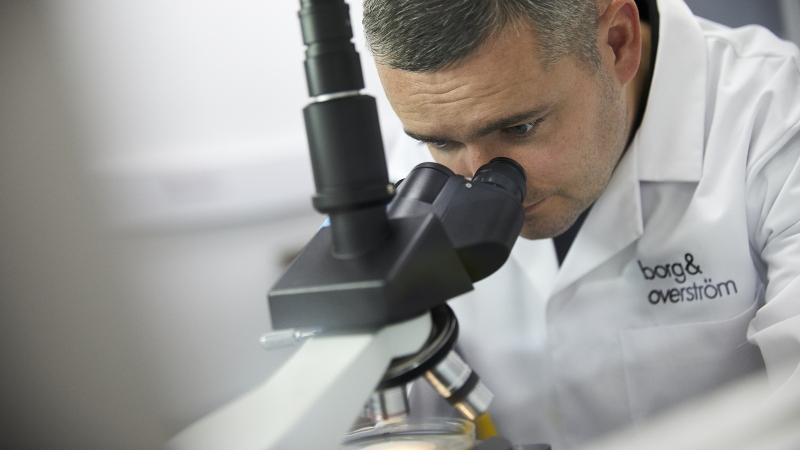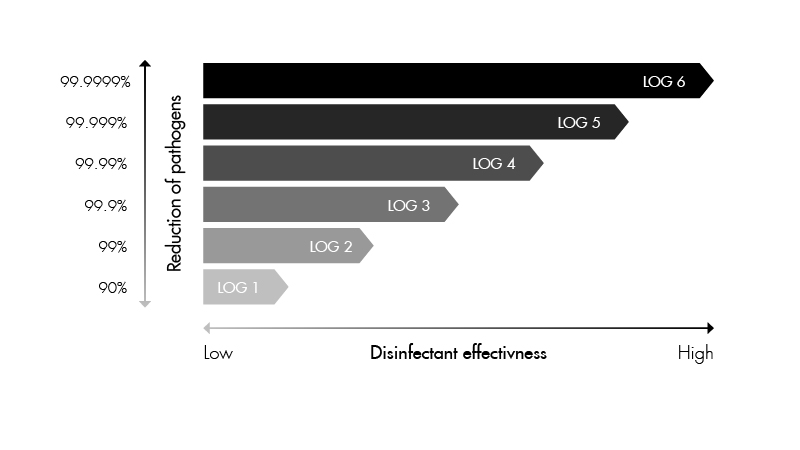Borg & Overström: how to make sure your water system is hygiene-assured

Let’s hypothesise – you’re browsing. You’ve done your research. You want to make sure that everything about your next purchase makes certain it is the best solution for your problem. Well, today’s topic of interest – making sure your water system is hygiene-assured.
Researching the hygiene standards of different products and the maintenance required, can feel like quite a daunting task. Let’s be honest, it is easy to talk a big game on the hygiene front – everyone in the world seems to have a numbered ‘log reduction’ process, or an ‘antibacterial agent that will kill 99.99…’ But what does this all mean?
Such statements can easily sound authoritative, and if you’re a scientist or medical professional, then perhaps this is all very easy. But if you’re like me, and needed to sit down with the experts to gain a full understanding of exactly what a kill log system is – then we’ve got the answers.
With our foundations set in the world of water systems, Borg & Overström have always strived for excellence through innovative design, hygiene, and safety. Our research and design team specialise in combining science and technology to pave the way for revolutionary products, always with your safety and comfort at the forefront.
In this article, we demystify the complicated by breaking down the science together, demonstrating exactly how Borg & Overström ensure all their products are hygiene-assured. By the end, you will know exactly what a log kill system means, the difference between sanitisation and disinfection, and how Borg & Overström excel the standard.
What is the log kill system?
The log kill system, or the Logarithmic reduction (log), is the means by which scientists are able to measure outcomes of bacterial reduction. So, here is how it works:
The log system correlates to a 10-fold reduction. So, let’s Imagine a colony of bacteria a million strong. If a cleaning agent were to kill 90% of the bacteria and leave behind 100,000 – this would be termed a 1-log kill. In the same scenario, but the cleaning agent reduced the bacteria by 99% with 10,000 remaining, this would then be termed a 2-log kill.
This is how those statistics look in order:
- 90% with 100,000 bacteria remaining is a 1-log kill
- 99% with 10,000 bacteria remaining is a 2-log kill
- 99.9% with 1000 bacteria remaining is a 3-log kill
- 99.99% with 100 bacteria remaining is a 4-log kill
- 99.999% with 10 bacteria remaining is a 5-log kill
- 99.9999% with 1 bacteria remaining is a 6-log kill
A single surviving bacterium in a million grants the 6-log kill. This term is commonly found in medical journals when biosecurity is paramount.
To the naked eye, these may look like small increments, but the difference between each step can be crucial depending on the environment of your product. For example, a medical environment would most likely require a 6-log kill, whereas, products that see a mix of public use would ordinarily strive for a 4-log kill and above.
Note: A good general rule for certain products seeing a lot of mixed (or public) use is to strive for a 4-log reduction and above. Leaving behind 1000 bacteria is over the minimum infective dose for humans.
How is a log kill test performed?
So, how does a log kill test work?
Scientists measure log kills by using a time-kill test. This methodology can be broken down into 5 main steps:
- The product in need of sterilisation will be intentionally “contaminated” with colonies of known bacteria until there is a sufficient build up.
- Samples are then removed and neutralised with the cleaning agent at timed intervals.
- The time it takes for a cleaning agent to reach maximal sterilisation, before a surface can be wiped down, is called ‘dwell time’.
- After the desired dwell time is reached, the surviving colonies are counted and compared to non-neutralised samples.
- The difference between the two reveals the log kill.
What is the difference between sanitisation and disinfection?
We’ve talked a lot about ‘log kill’ and the methodology behind this terminology. But what does this mean for you?
Well, let’s take a look at how the log kill system correlates to terms that are a little more familiar – sanitising and disinfecting.
A basic explanation of the difference between sanitisation and disinfection is understanding the difference between reduction and inactivation.
By sanitising a surface or product, you will remove a number of bacteria on that surface. This, however, does not necessarily kill bacteria, rather, the amount of potentially harmful bacteria on that surface will be denatured and reduced. The term ‘denatured’ refers to the chemical process of denaturation – this process modifies the bacteria in such a manner that it can no longer reproduce or affect humans.
On the other hand, disinfection will eliminate bacteria and pathogens. Because of this, disinfectant agents are more commonly used on products that are frequently touched or have multiple public uses.
Note: any reduction that is 4-log (99.99%) or higher, counts as disinfection. Such a thorough cleansing harms the bacteria’s ability to replenish, and brings it below infective dosage levels.
Below is an accurate representation of how the kill log scales with the disinfectant effectiveness:

This is not to say that sanitisation is inadequate. A sanitised surface is perfectly safe for activities such as food preparation. Most kitchens and well-maintained homes and office buildings will often use or supply sanitising products to ensure the environment is safe.
How does Borg & Overström meet your hygiene safety requirements?
Now we have broken down exactly what the log kill system is, you might be wondering: “So how does Borg & Overström make sure their products are hygiene-assured?”
Innovative by design, our methodology is unique in today’s marketplace. We call this new methodology – Totality® – and its protective process is applied to all of our water dispensers and tap systems in our product range.
The Totality® process combines six innovations, all of which provide exceptional levels of water dispenser hygiene and performance. So, with any Borg & Overström water system – you know the exact process of how we ensure all of our products follow the 6 stages to reach our hygiene-assured standards.
Just one example of these stages is the famous Sterizen® sterilising process. Unique to Borg & Overström, you will not find this treatment anywhere else. Learn more about Totality® protection by reading our article on workplace confidence in hydration – this highlights all six reasons why Totality® can help you stay safe.
Here at Borg & Overström, we never want you to be out of the loop and so our informational articles are proposed to provide you with all the answers that you need. With a pronounced history of providing the best design-led innovative water systems, we have the resources and passion to answer any question you might have – contact us – our expert staff are ready and waiting to help.
Note: Borg & Overström’s third party certification is available to view on request. Please contact our sales team to inquire.
